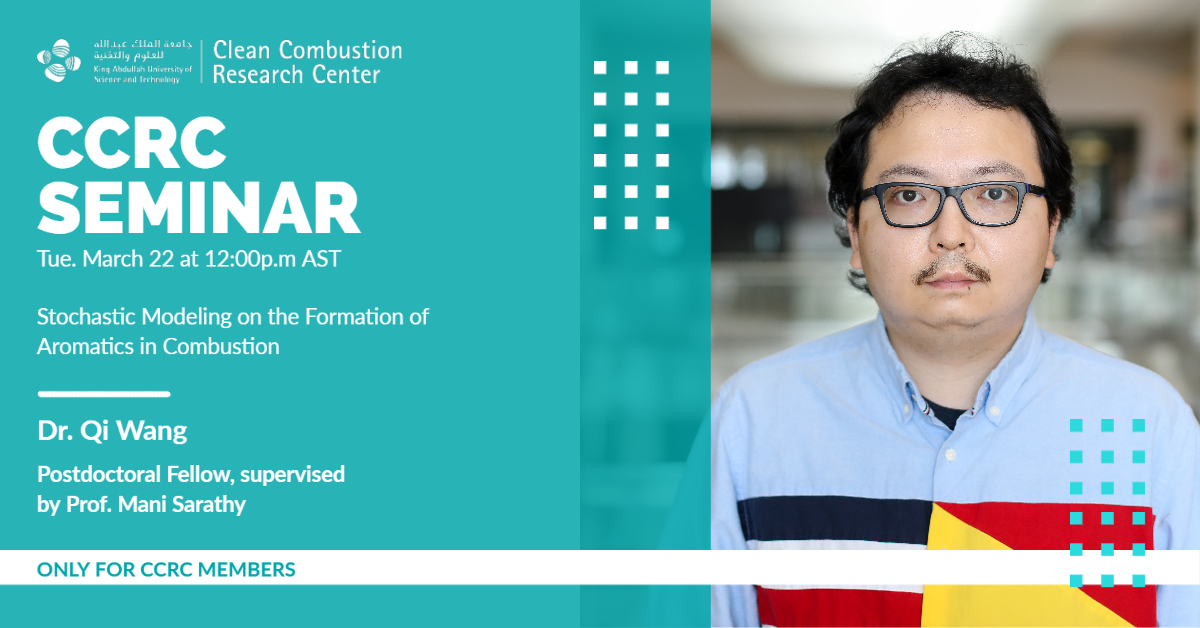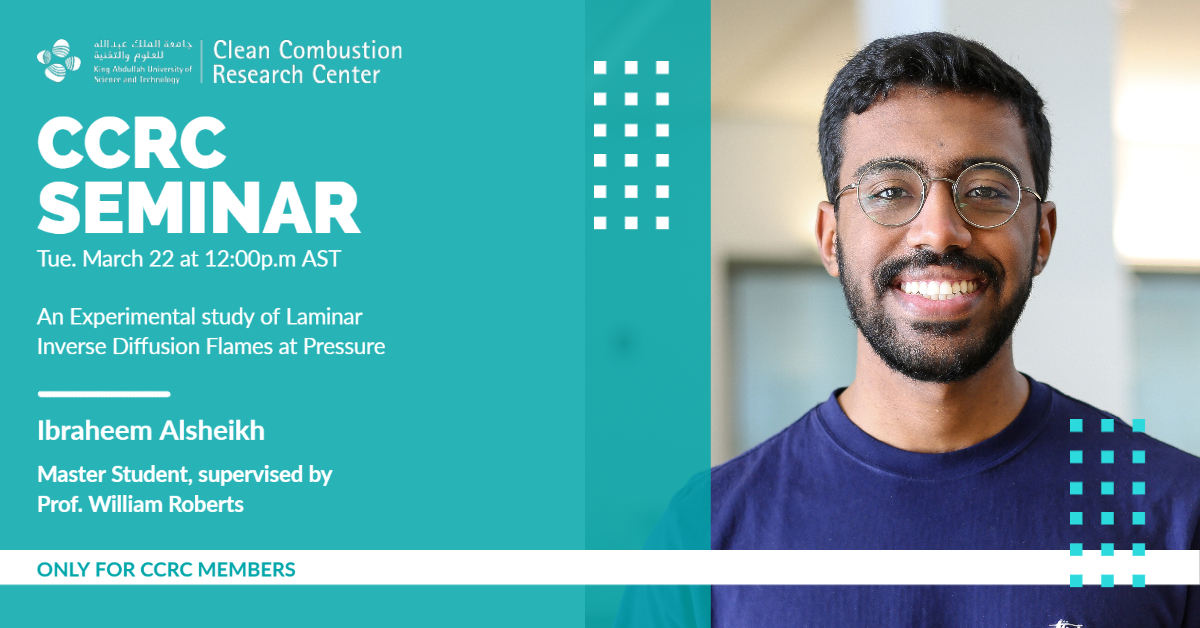


The talks are on:
Dr. Qi Wang
Postdoctoral Fellow supervised by Prof. Mani Sarathy
 Abstract: Understanding the formation of polycyclic aromatic compounds (PACs) in combustion not only bridges the knowledge gap between the small gas-phase species and incipient soot particles, but may also help address the global emission issues of both PACs and soot. Due to the timescales and underlying assumptions, there are two classes of approaches usually used to model the PAC formation, the deterministic modeling and the stochastic modeling. The deterministic modeling approach, such as the one implemented in the CHEMKIN software, has shown great predicting accuracy in small gas-phase species. Meanwhile, stochastic modeling offers a new approach for revealing the PAC formation pathways, and has gained increasing attention in recent years. In this seminar, I will briefly talk about the differences between two approaches, as well as some recent advancement in stochastic modeling for the PAC growth in combustion.
Abstract: Understanding the formation of polycyclic aromatic compounds (PACs) in combustion not only bridges the knowledge gap between the small gas-phase species and incipient soot particles, but may also help address the global emission issues of both PACs and soot. Due to the timescales and underlying assumptions, there are two classes of approaches usually used to model the PAC formation, the deterministic modeling and the stochastic modeling. The deterministic modeling approach, such as the one implemented in the CHEMKIN software, has shown great predicting accuracy in small gas-phase species. Meanwhile, stochastic modeling offers a new approach for revealing the PAC formation pathways, and has gained increasing attention in recent years. In this seminar, I will briefly talk about the differences between two approaches, as well as some recent advancement in stochastic modeling for the PAC growth in combustion.
Bio: Dr. Qi Wang is a postdoctoral fellow supervised by Prof. Mani Sarathy. He obtained his Ph.D. degree in Mechanical Engineering at University of Michigan in 2021. Prior to joining KAUST, he mainly worked on stochastic modeling on the formation of aromatics in combustion and oxygen-embedded PACs during his Ph.D. study. He is now working on nitrogen-containing aromatics, and reaction kinetics of hydrogen sulfide.
Ibraheem Alsheikh
Master Student supervised by Prof. William Roberts
 Abstract:
Abstract:
Catalyst degradation due to soot formation is one of the main issues in the autothermal reforming (ATR) process, which is widely regarded as the future technology for hydrogen production from natural gas. Soot formation under conditions similar to ATR was systematically investigated, focusing specifically on the effects of pressure on soot formation in inverse diffusion flames (IDFs) under oxygen rich conditions. Methane was diluted with carbon dioxide; the oxygen content in the oxidizer stream varied from 55 to 70%-by-mol. Soot concentrations in the flames were measured by laser-induced incandescence (LII) respectively. Flame images showed that, as the pressure increased, the luminous region of the IDFs moved downward to mask the blue reaction region, and the flames became narrower. The degree of flame narrowing in the IDFs was milder than normal diffusion flames (NDFs). Soot formation increased linearly with pressure. The linear relationship was different from that of the NDFs. Under the conditions of this study, lowering the oxygen content promotes soot formation in the IDFs. The results of this work contribute to the understanding of soot formation in IDFs at elevated pressures and the optimization of the ATR process.
Bio: Ibraheem Alsheikh is a Mechanical Engineering Masters student in the group of Prof. William L. Roberts. He Obtained his Bachelors degree from the University of California at Irvine in the US through the KAUST Gifted Students Program (KGSP). He was preciously an SRSi’14 student working under Prof. Mani Sarathy.